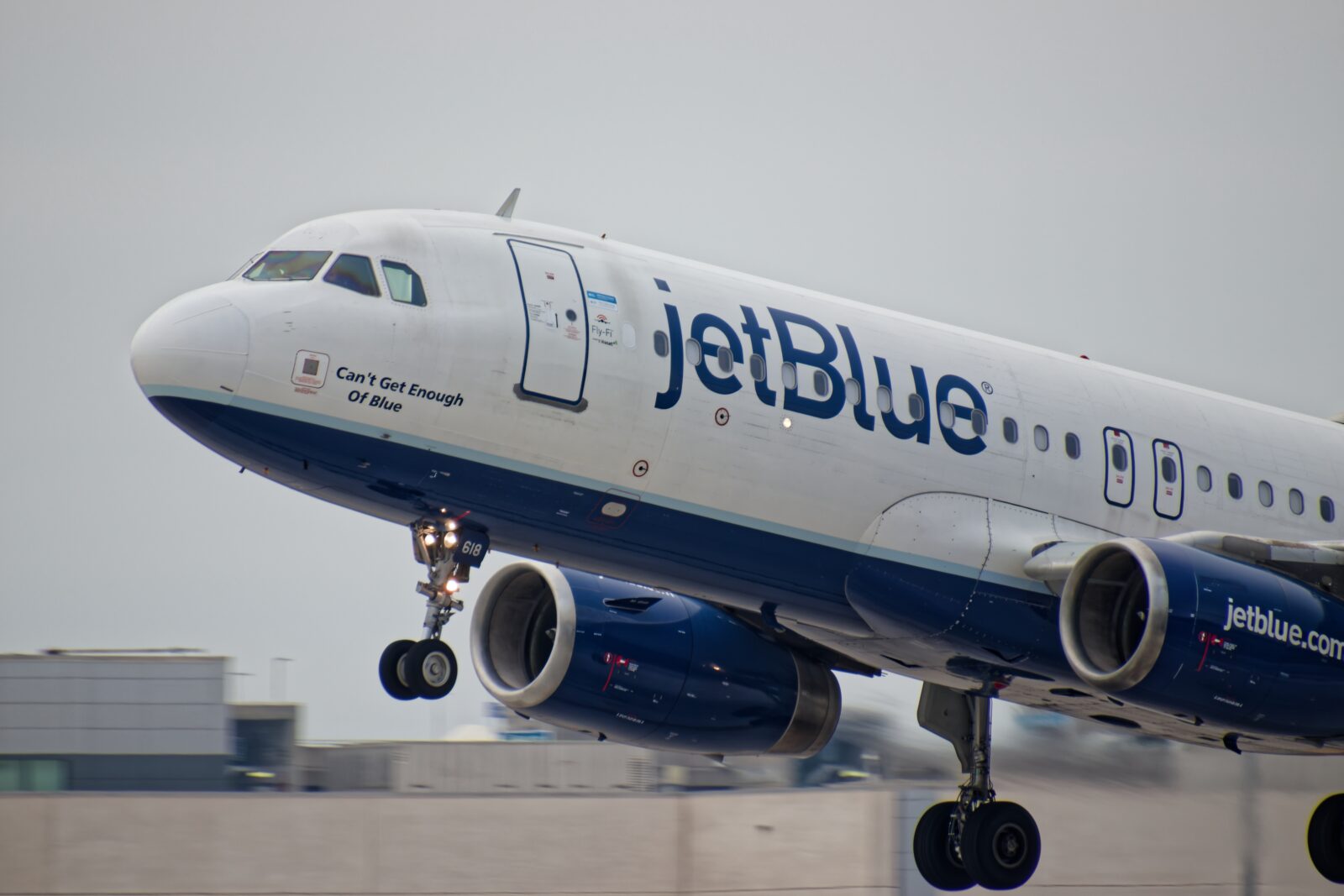
JetBlue has long said that its mission is to “bring humanity back to air travel” with generous legroom, free snacks and Wi-Fi, as well as seatback screens at every seat, all at a competitive price.
While the New York-based carrier’s operational performance is less than stellar, passengers have come to love the onboard experience, especially its transcontinental and international Mint products.

The problem, however, is that JetBlue has struggled in recent years to turn that popularity into profit. An ambitious plan to turn the business around by establishing a joint venture with American Airlines was blocked by the courts. So, too, was an even more ambitious plan to acquire Spirit Airlines to fuel growth.
JetBlue has been forced to slash unprofitable routes and delay new aircraft deliveries in an attempt to shrink back to profitability, but more clearly needs to be done, and new chief executive Marty St. George has a plan to attract higher-spending passengers.
The latest business plan from JetBlue will bring some good news for passengers, but be warned… as the old adage goes, ‘if you can’t beat them, join them,’ and that’s precisely what JetBlue plans to do as it becomes a lot more like big rivals that its passengers have come to hate.
First, the good news. In an internal memo leaked by aviation insider JonNYC on Blue Sky and X, the airline has confirmed that it plans to install a domestic First Class-style cabin across all non-Mint equipped aircraft from 2026.
Some of the details remain a closely guarded secret for now, but JetBlue says it will install between two to three rows of recliner First Class seats in a 2-2 configuration across its Airbus A220, A320, and A321 fleets. The seats are likely to be very similar to the seats that First Class passengers are accustomed to when they fly with Delta or United Airlines.
JetBlue is clearly tapping into a ‘premium leisure’ market with the launch of its domestic First Class cabin – a booming segment that shows no sign of slowing down.
St. George declined to explain how JetBlue would differentiate itself from its bigger rivals in First Class but offered that the airline wanted to keep operational complexity low and stay true to the airline’s low-cost model.

That might suggest JetBlue doesn’t plan to copy the elevated style of service that its Mint product has become so famous for. In fact, St George has even quashed rumors that the new First Class cabin will be dubbed ‘Mini Mint’, over concerns that it would confuse passengers – and perhaps lead to expectations that can’t be met.
Now, for the less-than-good news. Despite the fact that the new First Class seats will take up a lot more room than the seats they are replacing, JetBlue intends to keep the seat count roughly the same as today.
How they plan to do that is simple: reduce the pitch between seats in its Core and Even More Space cabins by around two inches. St George insists, however, that JetBlue’s seat pitch will be the same and, in some cases, greater than the legacy carriers.
Thankfully, JetBlue says it has no plans to cut other passenger amenities, like the free snacks and inflight Wi-Fi that have become synonymous with the JetBlue experience.

In September, JetBlue announced other ways it would become more like the legacy carriers by finally relenting on its refusal to open premium airport lounges for Mint passengers and elite frequent passengers.
The airline now views airport lounges as an essential element of the premium experience and will open its first two lounges in Boston and New York next year.
Taking another leaf from the legacy carrier playbook, JetBlue is also expanding its portfolio of credit cards, including a new premium card with additional benefits, while the airline has employed other legacy carrier tactics like charging passengers extra for ‘preferred’ seats in Economy.
Thankfully, JetBlue also says it is working to improve its lackluster operational reliability. It looks like JetBlue is finally entering its grown-up era.
Related
Mateusz Maszczynski honed his skills as an international flight attendant at the most prominent airline in the Middle East and has been flying ever since... most recently for a well known European airline. Matt is passionate about the aviation industry and has become an expert in passenger experience and human-centric stories. Always keeping an ear close to the ground, Matt's industry insights, analysis and news coverage is frequently relied upon by some of the biggest names in journalism.








When was the last time you flew jetBlue on a shorter domestic flight, such as BOS – MCO? Their free snacks have gone from a large selection of full sized portions to a maximum of 4 options, all 1 oz or smaller – expect a frown if you ask for more than 2. 3 of the last 5 or 6 flights I was on, including 2 on their “restyled” Airbus versions of aircraft, had issues (as in didn’t work) with their wifi and video screens – they previously provided frequent flier points when this occurred, no longer the case. The last flight I was on involved an equipment swap – a standard 321 was swapped by an aircraft configured in their international Mint option – the first 9 rows could not be used, everyone who was in extra space seats plus a few more rows were pushed to the back of the plan – in my case from a window extra space seat to a middle seat 3 rows from the back – I have yet to receive the refund for my extra space cost. jetBlue was a great airline to fly – it is now anything but
Just flew in extra legroom on an A220 to SJU from MCO with an A321 on the return. Service was OK both ways. Seats on JetBlue are much better than Spirit or Frontier’s super hard and skinny seats and JetBlue seats still recline. JetBlue at least still gives you a soda and a bag of chips without charging $8. Ticket price was competitive. I would pick JetBlue over most other carriers, at the moment.